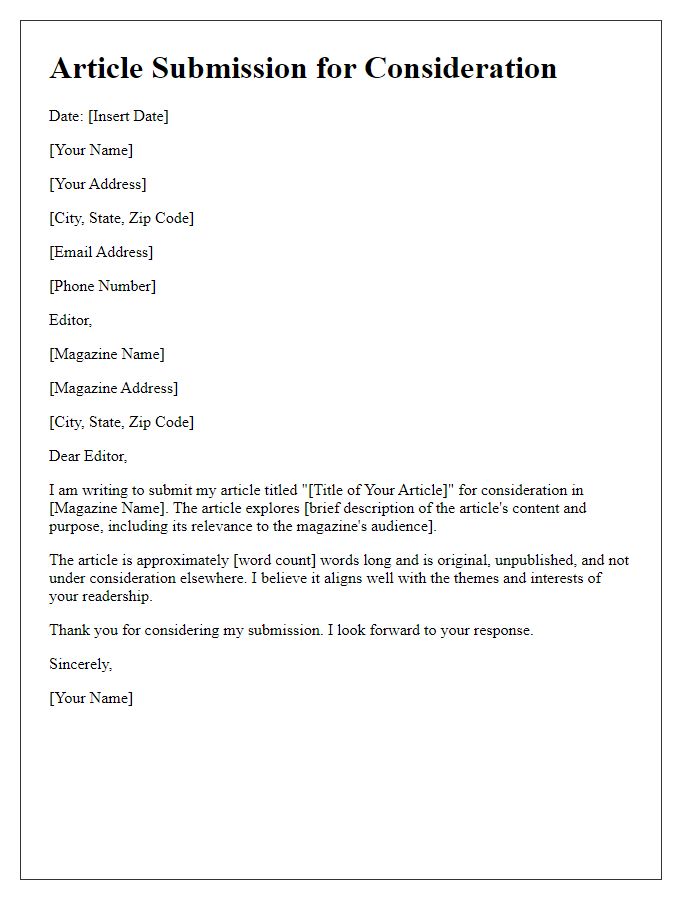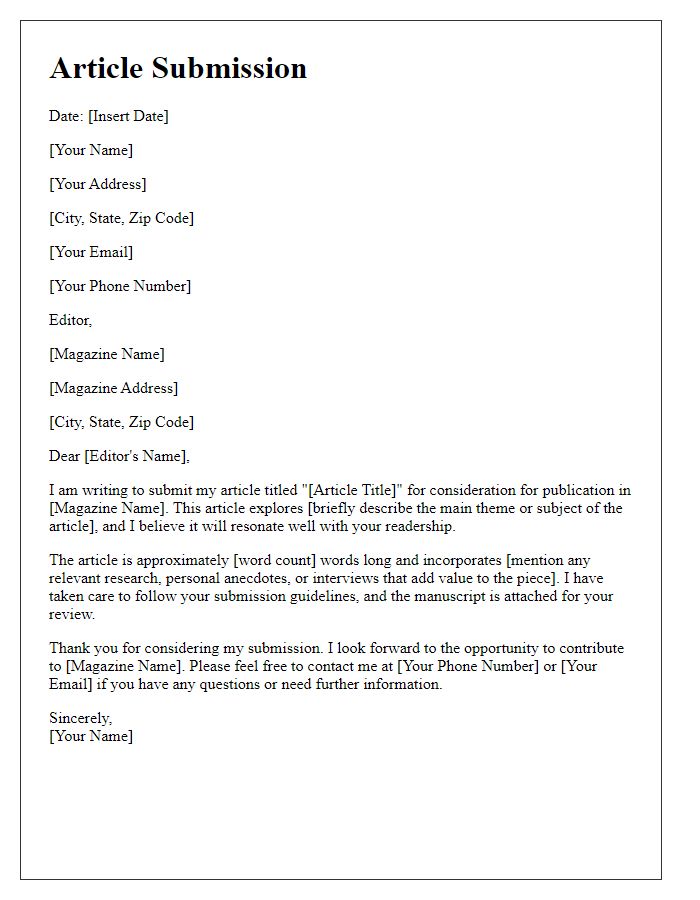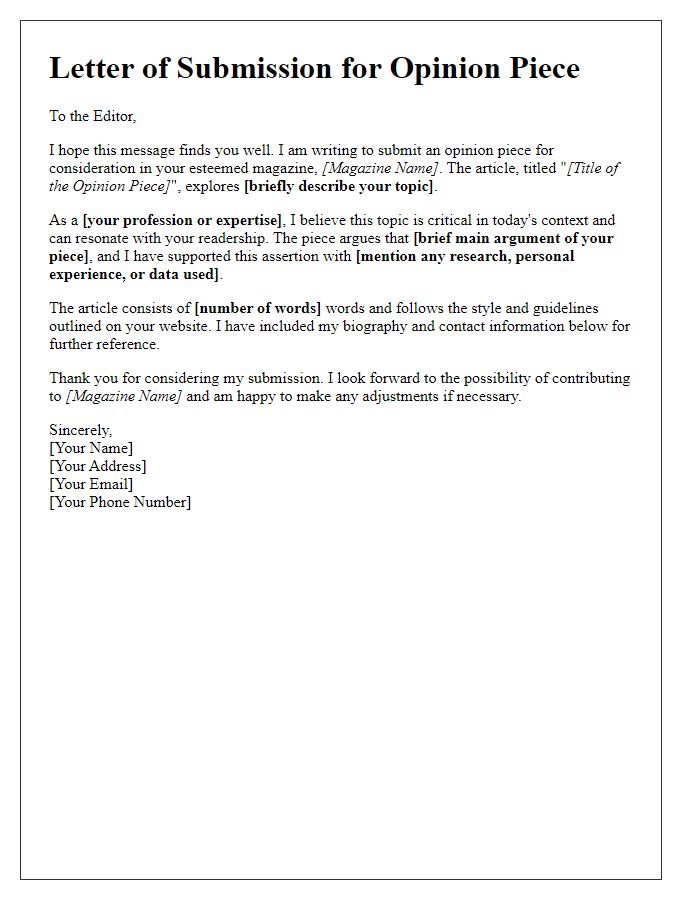Are you looking to snag a spot in your favorite magazine? Crafting the perfect letter to submit your article can make all the difference in catching an editor's attention. In this guide, we'll explore essential tips and tricks to ensure your submission stands out while maintaining a professional tone that fits the magazine's style. So, grab your pen, and let's dive into the art of writing a compelling submission letter that invites readers to discover what you have to say!

Author's contact information
Submission guidelines for magazine articles emphasize the inclusion of author's contact information, facilitating communication between the author and editorial team. Essential details typically comprise the author's full name for identification purposes, email address for electronic correspondence, and phone number (optional) for a more direct line of inquiry. Additionally, a brief biography (around 100 words) enables readers and editors to understand the author's background, expertise, and previous publications. Including personal or professional websites, such as LinkedIn profiles or writing portfolios, can enhance credibility and provide insight into the author's qualifications and literary style, establishing a connection with the magazine's editorial vision.
Article title and thesis statement
Crafting a compelling magazine article requires a clear title and a strong thesis statement. The title should succinctly capture the essence of the topic, enticing readers with its clarity and relevance. For instance, "The Silent Epidemic: Understanding the Impact of Mental Health on Urban Communities" suggests a critical exploration of mental health issues within a specific context. The thesis statement should articulate the central argument or insight of the article, such as, "This article examines the pervasive yet often overlooked issue of mental health in urban areas, highlighting the urgent need for improved support systems and community awareness to combat stigma and promote well-being." These elements set the foundation for an engaging and informative piece that resonates with the audience.
Target magazine and audience
Targeting a specific magazine can enhance the relevance of an article submission. For instance, "Gourmet Traveler," a publication dedicated to food enthusiasts keen on global culinary adventures, exemplifies this approach. Its audience, comprising affluent travelers and foodies, seeks rich narratives about unique dining experiences and exotic destinations. Crafting an article focused on a hidden gem restaurant in Florence, Italy, that employs local ingredients and traditional techniques could resonate strongly. Highlighting specific dishes, seasonal specialties, and exclusive interviews with chefs would further engage readers, providing them with both inspiration for their next trip and practical insights into the culinary world. Avoiding jargon while maintaining an informative yet enticing tone is pivotal to capture and retain the audience's attention.
Highlights of originality and relevance
Originality and relevance are essential elements for securing a spot in reputable magazines. Unique perspectives grab reader attention; for instance, exploring global warming impacts on coastal cities specifically like Miami, known for its vibrant culture and tourism. Incorporating data-driven research showcasing a 30% increase in flooding incidents over the last decade amplifies the necessity for innovative urban planning solutions. Highlighting personal interviews with local environmental activists such as Sylvia Gonzalez further enriches the narrative by providing firsthand accounts of community adaptation strategies. Emphasizing the urgency of climate action while portraying actionable insights gives the article depth and significance in contemporary discussions.
Compliance with submission guidelines
Ensuring compliance with submission guidelines is crucial for authors aiming to publish articles in reputable magazines. Each magazine typically provides specific instructions regarding formatting, word count, citation style, and submission method. For instance, The New Yorker often requires articles to be between 1,500 and 5,000 words, while maintaining a particular style that showcases narrative depth and cultural relevance. Additionally, guidelines may specify submission in a certain file format, such as .docx or PDF, and prefer that images be of high resolution (typically 300 DPI) for print quality. Adhering to these standards not only demonstrates professionalism but also increases the likelihood of acceptance, leading to successful publication in competitive literary and journalistic arenas.













Comments